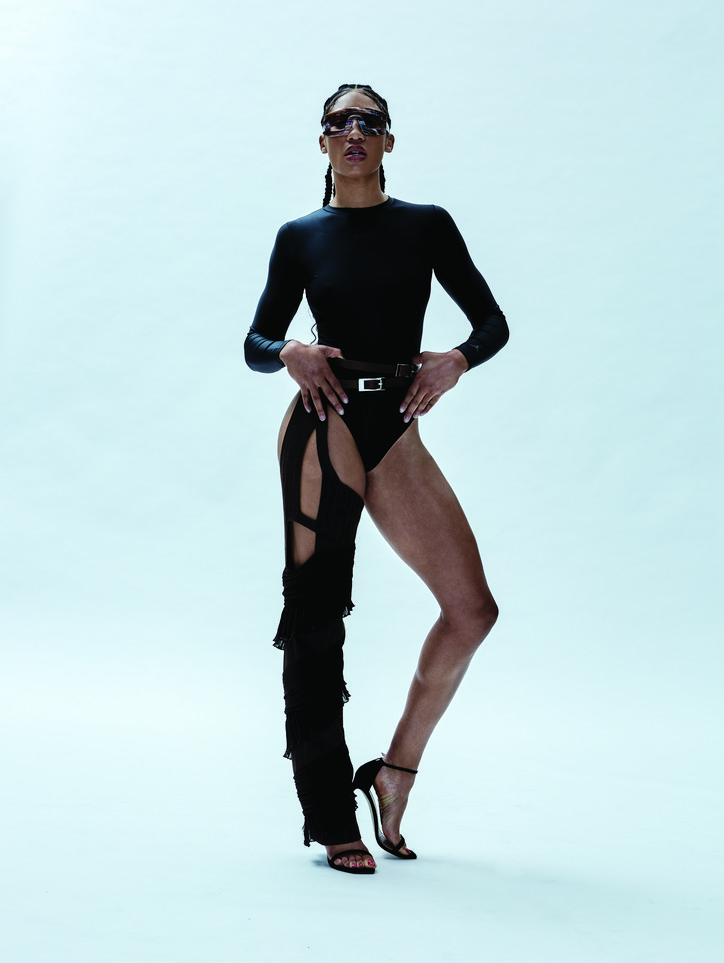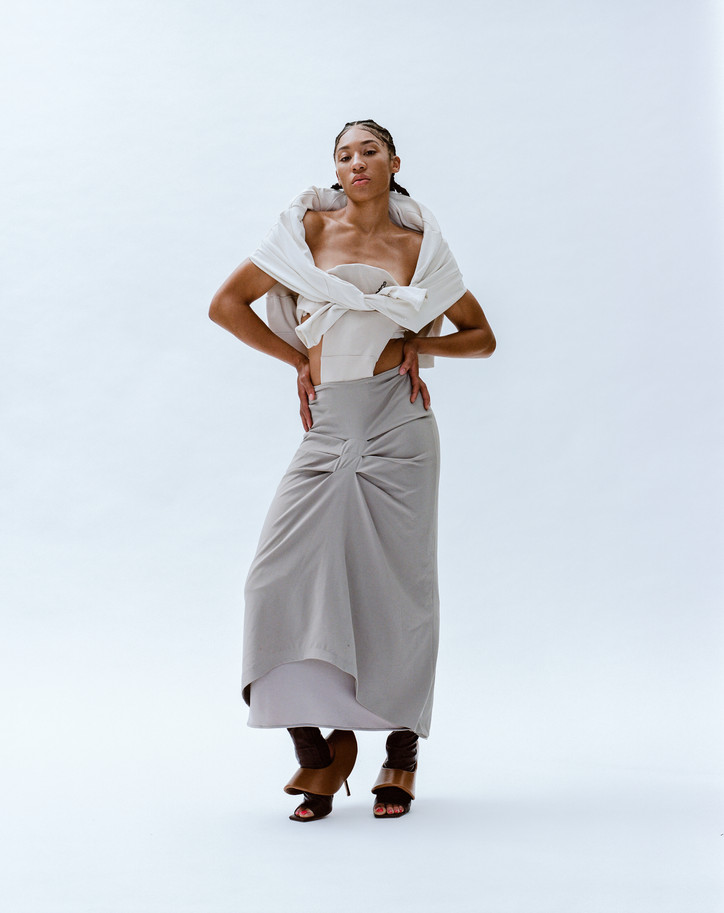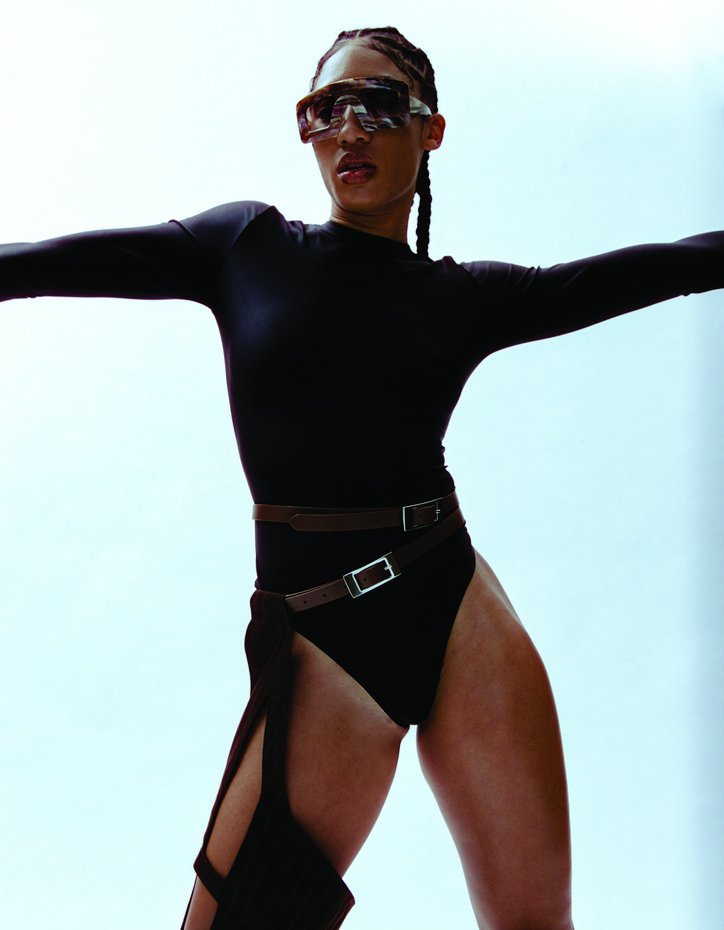The Records are Breaking
Since the first organized game of women’s college basketball in 1893 during the Suffragette movement, women’s sports have been an avenue for women’s bodies to soar and defy the odds. As women rallied for the right to vote, women athletes were beacons of light on and off the court, and today athletes like Aerial Powers are no exception to this rule. Known best for her strength in the paint, Powers is a leader in the W — having turned around this season for her team the Minnesota Lynx, hitting multiple career highs throughout the 2022 season with her assertive, enthusiastic, and unforgettable on-court style. Not to mention, Powers has been breaking other records this season unrelated to basketball — in the gaming space — and making a good cause of it. On our Zoom call, she explained to me with an energetic openness, “I’ve been through a lot of things that women or young girls go through in the Esports space when it comes to cyberbullying and being talked down to just because you’re female. Being able to give women a safe space to come and play the game, have tournaments and influence them to keep playing the game they love. No matter what, they know that, ‘Hey, I can look up to Aerial Powers, and she’s doing it, so I know I can do it, too.’ So that just makes me happy. It makes me happy that I’m using my voice and my platform in the right way.” And as we’ve learned, this year’s Jordan roster is full of winners, off the court as much as on it.
Born in 1994, in Detroit, Michigan, Powers found her love for basketball by visiting Detroit Shock games with her parents, Juan and Cecelia Powers. “I have always been heavily involved in sports,” she says. Though Powers’ first love was boxing, it was when a basketball landed in her hands that she found her calling. “As a young girl, literally no matter where I went, the basketball was with me. It was to the point where parents were like, ‘Hey, we’re going to your grandmother’s house,’ and I’d say, ‘hold on, let me get my ball and my shoes — just in case.’” And this preparation has served Powers well, she would go on to be on the 2016 All-Rookie team and win her first WNBA championship in 2019. Like one of her WNBA heroes, Maya Moore, Powers is blazing her own trail as a small forward and powerful force in the league.
Kimberly Drew – When you were a kid at Shock games, what did you think of how the players dressed? For me, seeing Teresa Weatherspoon on the New York Liberty inspired me to make more room for my inner tomboy. I saw myself in her cornrows and baggie shorts. How has seeing other queer players impacted how you show up today?
Aerial Powers – Sometimes, I want to be really feminine, and sometimes, I want to be like a cute boy, or a cute tomboy. And now, I can do both. For those young girls that might be struggling that way, it’s been crazy for me, too. I’m still in my seventh year thinking about it. But now, I would say, I’m just very confident in who I am and whatever I wear.
A child of the early 1990s, Powers grew up during the WNBA’s golden era, when the league was just getting its footing. Players like Sheryl Swoopes, Rebecca Lobo, and Dawn Staley rose to the public eye as players on the “Dream Team” that won at the 1996 Atlanta Games. That win would later be followed by the NBA Board of Governors approving the concept of a Women’s National Basketball Association (WNBA) to begin play in June 1997. “I remember back in those days, the Detroit Shock was like the thing. I remember my parents taking me to some games, and it was big for me to feel represented. The ladies I was looking up to definitely made a stamp, not only on my life, but on my heart. It allowed me to see who I could be, and ever since then, I was just like, ‘I want to be in the WNBA.’”


KD — Have you gone into this season with a certain mentality or attitude, and has it changed through the season?
AP — I’ve learned a lot through my life and my experiences. For example, I’ve been injured more than once — quad, Achilles injury, hip labrum tear. So I go into every game playing like it’s my last, because it could be. It could be the game that I get hurt, or it could be one opportunity that a young girl might not ever get to see me. So I try my best and try to play my best. So that’s the attitude I have going into games.
KD — What about when you are met with success, or with failure?
AP — When I’m met with success, of course I’m happy, just like anyone else. I think about all the times I’ve been putting in all this work, this effort, this consistent hard work, and I’m happy that it works out. But when I’m met with failure, I never really take it as failure. I take it as a learning experience. What can I do to get better? Why am I at this place that I am in now? What didn’t I prepare enough for? So that way I can prepare better the next time, so that next opportunity I get to be in that situation or another similar situation, I can be successful.
In the league’s heyday, and with so much on the line, it was as if the OG players were being watched both with adoration and an acute scrutiny. Players were discouraged from wearing jeans or t-shirts, for example. Though it was the first league for women, constructs of gender and “how to be a lady” have always loomed large. From the league’s inception, there were assumptions that women couldn’t dunk, though Lisa Leslie accomplished this feat in 2002, or that women couldn’t score as swiftly as men, but Liz Cambage holds the league record, having scored 53 points in a season game, or even that playing ball would prohibit players from starting families. Under this lens, fashion and decorum have always served as a litmus for players. And, with the culture wars of 1990s, presentation on and off the court would quickly become a battleground, especially for queer players. Even in 2022, as gender expansiveness has taken the mainstream, finding safety in our own bodies can still be an arduous journey.


KD – How do you prepare yourself to be seen? What goes on in your mind as you think about how to dress?
AP – It’s always about energy. What do I feel like today, you know? How do I feel like I want to dress today? Sometimes, it’s super super girly when I’m wearing heels, and sometimes, I’m just gonna come in wearing some sweatpants, or whatever. It’s just about the energy I feel when I wake up for the day.
KD – Heels?! I know this is a bit silly, but do you believe in “beauty is pain,” or are you a professional heels person?
AP – Girl, no! I love wearing heels, but I tore my Achilles, so I sacrifice a little to wear heels.
KD – Yeah, I feel that, because every Fashion Week, I wear heels for days, then it’s a wrap on heels for the rest of the month. What are some of the practical concerns that you have to consider in terms of dress, and what you wear on and off the court? Do you have anything that you wear even for the sake of superstition?
AP – For me, that’s so funny. I never want one sock looking a mess. I don’t want them too high, but I also don’t want them low.
KD – Yo, I swear these things can make or break the day! In fact, could you describe for me what it’s like on the days that you feel your best?
AP – This year, working with the Jordan Brand, and with Raul Lopez and Luar, I’ve been able to dress feminine and it was sexy, but it was also very athletic.
During our conversation, Powers took a long pause as she described in intimate detail every part of her outfits which were assembled, crafted, and hand-picked by Raul Lopez, the founder and creative director of Luar. Lopez’s brand — which is the reversed namesake of its founder — intends to promote the constant curiosity of “tomorrow,” and with support from Jordan Brand, Lopez and Powers worked together to craft several looks that held the potency to do just that. “Growing up in NY, in this urban dystopia, I was always obsessed with being a Jordan girl. It was quintessential to being an icon in the hood. Conceptualizing Aerial’s look after hanging out with her was a marriage in Jordan heaven,” wrote Raul earlier this year. The final looks result in both a powerful tribute to the past and an audacious call towards a more unapologetic future. Their connection, both personally and creatively, was clear from the moment they met at Nike WHQ in Beaverton, where they unanimously answered the question, “who is your biggest fashion inspiration?” with, “my mother!” On a personal note, as another kid of the 1990s, I couldn’t imagine seeing a player embody an androgynous, freeform way of showing up exactly as she is. It’s the audacity of players like Powers that throw up a flare for the rest of us, signaling that change is imminent.
“Being who you are is so important,” Powers explains. “Because at the end of the day, no matter what, people are going to have something to say about it. They’re gonna like it, or they’re not gonna like it. And you’re not gonna be able to please everyone, but at the end of the day, you want to be able to look in the mirror and say, ‘I felt comfortable.’”
